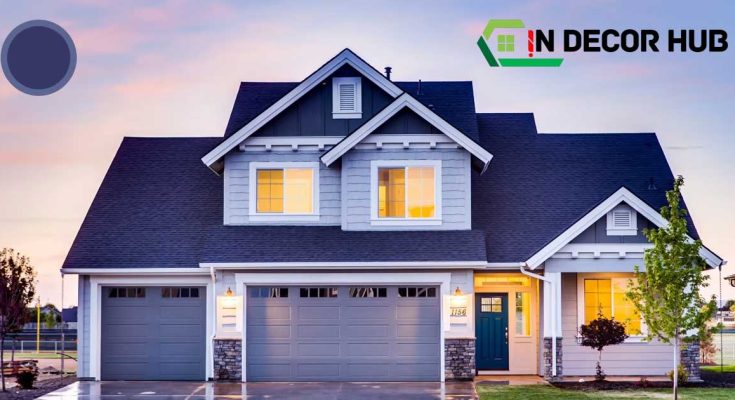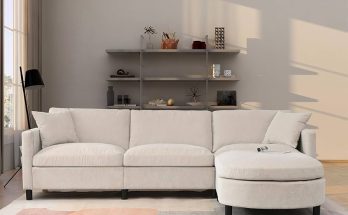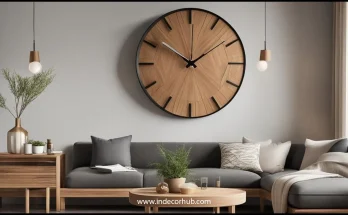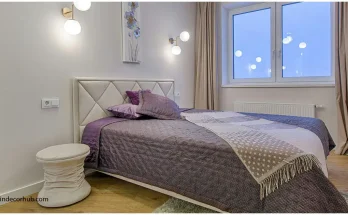A house exterior typically looks best with three colors. This three-color palette often includes a dominant shade, a trim color, and an accent color.
Choosing the ideal color combination for your house exterior can be a pivotal step in enhancing its curb appeal. The magic number is three: the main body color, the trim color to highlight architectural details, and the accent color to bring doors and shutters to life.
Selecting harmonious hues ensures a cohesive look that can make your home stand out or blend with the surroundings, depending on personal preference. Keeping the color count to three prevents visual clutter and creates a balanced and appealing exterior.
It’s all about crafting a welcoming and appealing facade that reflects your fashion whilst thinking about the house’s architecture and the community’s individual.
Table of Contents
1. Color Decisions: The Visual Impact On House Exteriors
Choosing the right colors for a house exterior isn’t just about personal taste. It’s a choice that influences the visual concord and appeal of the house. The hues you select can remodel a space, influencing both its aesthetics and how its miles are perceived.
Curbside Appeal And Color Harmony
First impressions matter and the exterior of a house is no exception. A well-considered color scheme can significantly boost a property’s curbside appeal. When selecting colors, consider these factors:
- Architectural Style: Certain colors enhance different architectural designs.
- Landscape: Reflect colors found in the home’s natural surroundings.
- Neighborhood Context: Aim for a fitting color palette that also allows your home to stand out.
Color harmony is essential for a cohesive look. Most experts recommend using three colors on your exterior:
- Main body color
- Trim color
- Accent color for doors, shutters, and other small areas
Psychology Of Color Choice
Colors evoke feelings and communicate certain messages. Here’s a quick guide to what some colors might say:
| Color | Feeling/Mood |
| Blue: | Calming and serene |
| Red: | Exciting and bold |
| Yellow: | Welcoming and cheerful |
| Green: | Nurturing and connected to nature |
| White: | Clean and simple |
Selecting the ideal color palette is a strategic decision that impacts not only aesthetics but also the emotional response it evokes in viewers.
2. Historical And Regional Color Schemes
Choosing the right colors for a house exterior is not just a matter of personal taste. It’s also about honoring the historical and regional narratives that buildings tell through their facades. Knowing the right palette can enhance the architectural style and respect the local environment.
Traditional Palettes Across Styles
Historically, different architectural styles have distinct color schemes that accentuate their features. Here’s how traditional palettes play across various styles:
- Colonial: Classic whites, deep reds, and blues
- Victorian: Rich, vibrant hues with contrasting trim
- Craftsman: Earthy tones like greens and browns
- Tudor: Muted shades with half-timbered work
- Modern: Bold monochromatic or neutrals
Regional Preferences And Trends
Color choices often reflect a region’s landscape and climate. These trends signify a sense of place:
| Region | Preferred Color Trends |
| New England | Sea-inspired blues, whites, and greys |
| Southwest | Desert hues like oranges and reds |
| Pacific Northwest | Earthy greens and browns |
| South | Bright pastels and whitewash |
Remember, the number of colors you choose should complement the house style and locale.
3. The Role Of Architecture In Color Selection
The colors chosen for a house exterior do more than just catch the eye; they highlight the very essence of the home’s design. Careful attention to the structure is essential whilst choosing colorations, ensuring that they complement architectural information, era, and style. Let’s dive into how the structure performs a pivotal position within the shade choice manner for a house exterior.
Tailoring Colors To Home Styles
Matching colors to home styles is an art form. For example, bold, primary colors can bring out the whimsical nature of a Victorian home, while earthy tones might better suit a Craftsman-style abode. Each architectural style has a palette that historically complements it, yet personal taste can also introduce modern flair.
- Colonial: Classic whites or muted tones with dark shutters.
- Modern: Monochromatic schemes or bold, contrasting colors.
- Ranch: Natural, soft shades that blend with the landscape.
- Tudor: Rich, warm tones highlighting stucco and timber.
Architectural Details As Color Accents
Architectural elements provide the perfect opportunity for color accents. These are the defining features of a home’s design that can be emphasized through the strategic use of color. Think shutters, doors, trim, and decorative molding. By portraying this information in a contrasting coloration, they pop and provide the house with a unique character.
| Detail | Accent Color Ideas |
| Shutters | Bold or dark hues contrast with the wall color |
| Front Door | Vibrant colors that welcome and impress |
| Trim | Lighter or darker shades that frame the home |
| Gables | Subtle or rich tones that enhance the roofline |
Selecting the right colors for a house exterior is a journey through history, style, and personal expression, guided by the architecture itself. Thoughtful consideration of these elements ensures a result that both stands out and feels at home in its surroundings.

4. Starting With A Base: The Dominant Color
Selecting the main color for your house exterior is a big decision. It sets the tone for your whole property. Bold, subtle, bright, dark – your choice will speak volumes. Think of your house as a canvas. The dominant color is the background. It will cover the largest area. Everything else will rest on this choice.
Choosing A Primary Hue
The primary hue creates the first impression. Will it blend with the neighborhood? Stand out? Reflect nature? Here’s what to ponder:
- Style: Is your home modern or classic? Pick a color that fits.
- Material: Brick, wood, vinyl? Certain materials look best with certain colors.
- Climate: In hot places, light colors can keep a home cool.
Considering The Roof And Landscape
Picture the roof and yard. They influence your dominant color. A red roof asks for different colors than a black roof.
| Roof Color | Good Dominant Colors |
| Red | Taupe, Cream, Beige |
| Black | Gray, White, Blue |
| Brown | Yellow, Green, Ivory |
The landscape around your house matters too. Trees, flowers, grass – they all count. They’re like your house’s frame. Make sure they get along with the dominant color.
5. Layering With Secondary Colors
Choosing the right colors for a house exterior makes it stand out. Layering with secondary colors adds depth. These shades complement the main color. They bring out the beauty of your home. A well-chosen palette makes all the difference.
Trim And Shutter Coordination
The trim and shutters frame a home’s features. Coordinating them with secondary colors is key. Select shades that contrast yet harmonize with the primary color. This defines the house’s lines and shape. Bold trims capture attention. They highlight the architecture.
- Choose a lighter or darker shade than the main color for trim.
- For shutters, opt for complementary colors that accentuate.
- Ensure consistency in color for a unified look.
Doors And Windows As Focal Points
Doors and windows draw the eye. They are central to curb appeal. Use secondary colors to make them pop. The right color turns a door into a welcoming feature. It turns a window into a picture frame for the outside world.
| Element | Color Idea |
| Front Door | A bold color that stands out. |
| Windows | Subtle hues that complement the primary. |
Focus on these elements to enhance your exterior design:
- Test multiple hues for the perfect match.
- Balance shades for a pleasing aesthetic.
- Consider the surrounding landscape when choosing colors.
6. Accent Colors: Adding Depth And Personality
Color transforms a home. It brings character and life to any exterior. Carefully chosen accent colors deepen the house’s personality. They add layers, turning basic structures into eye-catching beauties. Let’s explore how to do this right.
Strategic Use Of Bold Colors
Thinking of making a statement? Bold colors might be the answer. Yet, bold should not mean brash. These colors should highlight the finest features of your home. Think shutters, doors, and trim. It is all about creating balance. A bold door, for instance, can draw the eye without overwhelming the senses.
- Choose one bold shade to stand out against a neutral backdrop.
- Consider the architecture when picking the perfect spot for a pop of color.
- Use bold colors to highlight unique features, like an ornate window frame or decorative trim.
Accents That Complement, Not Overpower
Accent colors should act like the perfect jewelry for your house—thoughtful and enhancing. They are there to complement the main house color. Too many loud colors can clash and confuse the eye. A good rule to follow is the 60-30-10 ratio. This means 60% is the main color, 30% secondary, and 10% for the accent.
| Main Color (60%) | Secondary Color (30%) | Accent Color (10%) |
| Walls | Garage doors, Roof | Front door, Shutters |
- Match accent colors with the main color for a harmonious appearance.
- Use accents to create rhythm in your design.
- Limit your palette to three colors to maintain elegant simplicity.
7. Balancing Neutrals And Vibrancy
Choosing the right colors for your house exterior can be both exhilarating and daunting. The balance between neutrals and vibrancy is key. It’s not just about picking your favorite colors. It’s about creating a harmonious blend that enhances the home’s architecture and sits well within the environment. A well-thought-out palette can elevate your home’s curb appeal.
Mixing Neutrals For Nuance
Neutral colors offer a timeless backdrop. They make a house look refined and elegant. Using different shades of neutrals can add depth to the design. Consider a light gray for the main body with charcoal accents for trim.
- Beige, tan, and cream blend seamlessly with the landscape.
- Darker neutrals, like browns or slates, anchor the home to its surroundings.
- Adding a white or off-white trim can give definition and crispness to the edges.
Choosing two to three shades within one color family can prevent a flat appearance. Contrast in textures or finishes, like matte versus gloss, adds yet another layer of visual interest.
Introducing Bright Colors Carefully
While neutrals are safe, a pop of bright color can bring personality and zest. An accent color can highlight architectural features. Consider a bold front door or vibrant shutters to draw the eye.
| Feature | Color Ideas |
| Front Door | Red, yellow, blue |
| Shutters | Green, black, berry |
| Porch | Turquoise, coral, navy |
Limit bright colors to one or two elements. Balance them with neutrals so the house does not become overwhelming. Use colors that match the environment. For example, a beach house might feature sandy tones with oceanic blues.
8. The Three-color Rule Explained
Choosing colors for a house exterior is an exciting task. A popular guide is the Three-Color Rule. This rule allows proprietors to determine colors for his or her home’s exterior. It suggests the use of 3 primary colors. These shades deliver the house a balanced, harmonious appearance. A well-picked trio can enhance architectural details and boost curb appeal.
Achieving Balance And Unity
Balance and unity are key to a beautiful home exterior. The Three-Color Rule assists in achieving these. The first color is for the siding or main part of the house. The second color highlights the trim and edges. The third color accentuates the doors, shutters, or architectural features. This rule makes color selection simple and effective.
The first Color: The Dominant second color: Complements the third color: A Pop of Personality
Choosing the right colors creates a pleasing visual effect. The main hue ties the look together. The secondary color supports the main color. The accent color adds interest and personality. This color pattern connects different elements of the house as one cohesive unit.
Examples Of Successful Three-color Exteriors
| House Style | Main Color | Trim Color | Accent Color |
| Cottage | Soft Beige | White | Forest Green |
| Modern | Charcoal Gray | Black | Crimson Red |
| Traditional | Creamy White | Light Gray | Navy Blue |
Variety in style leads to different color choices. A cottage may shine in soft beige, with white trimming and forest green accents. For a modern home, charcoal gray can dominate, complemented by black trim, finished with a pop of crimson red on the door. Traditional houses might look best in creamy white, with light gray trim, and navy blue shutters that stand out. These examples follow the Three-Color Rule to create eye-catching, memorable homes.

9. Breaking The Rules: More Than Three Colors
When it comes to painting the exterior of a house, conventional wisdom suggests sticking to three colors. But what if you want your home to stand out on the block? Dare to be bold with more hues! Embrace a palette that displays your fashion and persona. Some house owners and designers are pushing the envelope, exploring colorful multi-color schemes that can captivate and enchant.
Multi-color Schemes Done Right
Getting a multi-color scheme right is all about balance and harmony.
- Choose a dominant base color that covers the majority of your house.
- Select complementary accent colors for trim, doors, and architectural features.
- Keep a consistent color palette throughout the exterior for a cohesive look.
Explore historical color schemes for inspiration or use online tools to visualize your choices. A colorful Victorian home, for instance, can sport multiple shades that highlight its intricate details.
Risks And Rewards Of Additional Colors
Embracing more than three colors can be a game of risk and reward.
| Risks | Rewards |
| Clashing colors can overwhelm the eye. | A unique exterior could increase curb appeal. |
| Too many colors might decrease resale value. | Vibrant homes often become landmarks in the neighborhood. |
| Maintenance can be more challenging with multiple colors. | Multicolored exteriors let personality shine. |
When adding more colors, consider the context of your neighborhood. A boldly painted house can be stunning, but it should not clash with its surroundings. The secret is to strike a balance between expressing individuality and preserving harmony for your community.
10. Selecting Colors For Different Materials
When dressing your home’s exterior, choosing the right colors is crucial. Just like picking an outfit, some combinations make dazzling impressions. Others, not so much. The key lies in the materials.
Paint
For paint, less can indeed be more. One to two main colors with a contrast trim color works best. But remember, the paint should reflect the character of your home. A classic Victorian looks stunning in rich, bold shades. Meanwhile, a beach house shines in lighter hues. Here’s a guideline:
- Body of the house: Choose a dominant color.
- Trim: Select a contrasting shade that complements the dominant color.
- Doors and shutters: Here, a pop of color can add personality.
Siding
Siding provides texture and depth. Choose no more than three colors. The primary hue should cover the majority, while the remaining two play supporting roles. Durable materials like vinyl and wood offer a broad color palette. Consider the following:
| Primary Color | Secondary Color | Accent Color |
| Main Panels | Window Trims & Fascias | Doors & Shutters |
Stone Considerations
For homes featuring stone, the color scheme should naturally flow from its varied palette. Identify the subtle undertones in the stone. Choose paint or siding shades that echo these hues.
- Start by identifying the most prominent color in the stone.
- Select paint or siding that matches or complements this color.
- Use the stone’s secondary colors for trim or accents.
Combining Textures And Colors
Varying textures alongside your color choice can make your home stand out. Imagine combining wooden sidings painted in soft greys with a rough stone base in warmer tones. The golden rule is harmony. Ensure that the colors between different materials blend seamlessly.
Here’s a cheat sheet:
- Match grains and grooves in siding with the flow of the stone.
- Use shared tones for a cohesive look.
11. Maintenance And Longevity Of Exterior Colors
Maintenance and Longevity of Exterior Colors play a crucial role in a house’s curb appeal. The right selection can mean the difference between a home that dazzles and one that fades into the background. Homeowners often ponder the ideal number of colors for their exterior. Yet, elements past beauty, inclusive of maintenance and durability, are critical. Good color choices can withstand the check of time, saving money and attempting preservation.
Weather and Wear on Color Choices
Weather And Wear On Color Choices
Weather significantly impacts color longevity. Here are some points to consider:
- Darker colors absorb more heat, possibly leading to quicker deterioration.
- Lighter shades reflect sunlight, which can help them last longer.
- Quality paint with UV inhibitors protects against sun damage.
- Choose colors based on your local climate to maximize resistance.
Color Fading and Retouches
Color Fading And Retouches
Fading is inevitable but some colors fade less noticeably. Here’s how to deal with it:
| Color Type | Fading Risk | Retouch Frequency |
| Vibrant Colors | High | More often |
| Neutral Colors | Low | Less often |
Remember, high-quality paint tends to hold its color longer.
Retouches blend away imperfections. Always keep extra paint for quick touch-ups.
12. Color Planning Tools And Resources
Choosing the right colors for a house exterior is a big decision. Color Planning Tools and Resources can make this task much easier. These tools help visualize potential color schemes. They take the guesswork out of selecting the perfect palette. Let’s delve into some popular options available today.
Online Visualizers And Apps
In the digital age, online visualizers offer a high-tech solution. They allow homeowners to try out different colors virtually. The process is simple. Upload a photo of your home. Then apply various color schemes. This way, you see the results without a single paintbrush stroke.
Apps bring convenience to your fingertips. With a few taps from your smartphone, those apps provide a plethora of coloration options. They come with features that keep your favorites. Some even suggest color combinations. Options include:
- ColorSmart by Behr™: Mix and match colors with ease.
- ColorSnap® Visualizer: Crafted by Sherwin-Williams for precision in color selection.
- Project Color™: Created by The Home Depot to visualize colors in real space.
Sample Boards And Swatches
Sample boards and swatches offer a tangible approach. They are perfect for getting a true sense of how colors look. Swatches can go against the siding. This helps view them in natural lighting.
Using sample boards has benefits. Paint a large board with your chosen color. Then move it around your home’s exterior. This indicates how the coloration adjustments in unique lighting. It is a palms-on method. It guarantees your shade desire will appear at the first-rate at all hours.
| Resource | Description |
| Local Paint Store | Visit for free swatches and expert advice. |
| DIY Sample Boards | Create your own to test various colors. |
13. Frequently Asked Questions For How Many Colors Should A House Exterior Have
What Is The Ideal Number Of Exterior Colors?
Typically, a house exterior should have three colors: the main body color, the trim color, and an accent color for doors or shutters.
How To Choose Coordinating Exterior Colors?
Selecting exterior colors involves considering the home’s architecture, the roof color, and the surrounding landscape for a harmonious palette.
Does Exterior Color Affect Curb Appeal?
Yes, the color scheme of a house’s exterior can significantly enhance or detract from its curb appeal and overall neighborhood aesthetic.
14. Conclusion
Selecting the right color donation for your home’s exterior is more art than science. Aim for three to five hues that complement each other. This will enhance cut-down enchantment and reflect your fashion. Remember, balance is key to creating a harmonious look that welcomes guests and delights the neighborhood.
Trust your instincts and choose a palette that resonates with you and your home’s character.



